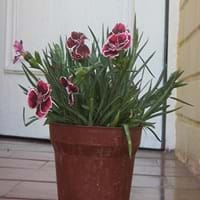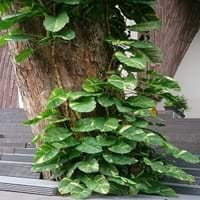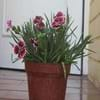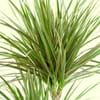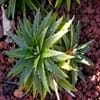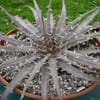Life Span
Annual and Perennial
Perennial
Type
Tender Perennial
Vines
Origin
Hybrid origin, India
Australia, China, India, Japan
Types
Dianthus chinensis, Dianthus deltoides
Marble Queen, species itself, Neon, all-green
Number of Varieties
Not Available
Habitat
meadows, Waste areas
Humid climates, Tropical regions
USDA Hardiness Zone
8-11
10-11
Sunset Zone
A2, A3, H1, 1a, 1b, 2a, 2b, 3a, 3b, 4, 5, 6, 7, 8, 9, 10, 11, 12, 13, 14, 15, 16, 17, 18, 19, 20, 21, 22, 23, 24
Not available
Habit
Cushion/Mound-forming
Prostrate/Trailing
Minimum Height
Not Available
Flower Color
Pink, Fuchsia
White
Flower Color Modifier
Bicolor
Not Applicable
Fruit Color
Tan
Yellow Brown
Leaf Color in Spring
Light Green, Blue Green, Gray Green
Yellow
Leaf Color in Summer
Light Green, Blue Green, Gray Green
Light Green
Leaf Color in Fall
Light Green, Blue Green, Gray Green
Light Green
Leaf Color in Winter
Light Green
Light Green
Leaf Shape
Elliptic
Ovate
Plant Season
Spring, Summer, Fall
All year
Sunlight
Full Sun, Partial Sun
Partial shade
Type of Soil
Loam, Sand
Loamy
The pH of Soil
Acidic, Neutral
Neutral
Soil Drainage
Well drained
Light
Bloom Time
Spring, Late Spring, Early Summer, Summer, Late Summer
Mid Summer
Tolerances
Drought
Dry soil, Shade areas, Sun
Where to Plant?
Container, Ground, Pot
Ground, Pot
How to Plant?
Divison, Seedlings
Seedlings, Stem Planting
Plant Maintenance
Medium
Medium
Watering Requirements
Needs watering once a week, Requires watering in the growing season
Do Not over Water, Never Over-water, Water when top layer of soil becomes dry
In Summer
Lots of watering
Lots of watering
In Spring
Moderate
Moderate
In Winter
Average Water
Less Watering
Soil pH
Acidic, Neutral
Neutral
Soil Type
Loam, Sand
Loam
Soil Drainage Capacity
Well drained
Average
Sun Exposure
Full Sun, Partial Sun
Full Sun, Partial Sun
Pruning
Remove damaged leaves, Remove dead leaves
Remove damaged leaves, Remove dead branches, Remove dead leaves
Fertilizers
Compost, organic fertlizers, Water soluble fertilizers
All-Purpose Liquid Fertilizer
Pests and Diseases
Insects
Mealybugs, Mites, Scale
Plant Tolerance
Drought
Drought
Flowers
Showy
Insignificant
Flower Petal Number
Double
Not Available
Foliage Texture
Fine
Medium
Foliage Sheen
Matte
Glossy
Attracts
Bees, Butterflies, Insects
Insects
Allergy
Asthma
no allergic reactions
Aesthetic Uses
Beautification, Bouquets, Cottage Garden, Hanging Basket, Landscape Designing, Showy Purposes
Beautification, Cottage Garden, Landscape Designing, Showy Purposes
Beauty Benefits
Not Available
No Beauty Benefits
Environmental Uses
Air purification, Food for insects
Air purification, Food for insects, Provides ground cover
Medicinal Uses
No Medicinal Use
ascites
Part of Plant Used
Flowers
Stem
Other Uses
Decoration Purposes, Employed in herbal medicine, Showy Purposes, Used as Ornamental plant, Used for its medicinal properties
NA
Used As Indoor Plant
Yes
Yes
Used As Outdoor Plant
Yes
Yes
Garden Design
Bedding Plant, Container, Cutflower, Feature Plant, Groundcover, Hanging Basket, Mixed Border, Rock Garden / Wall
Cutflower, Dried Flower/Everlasting, Mixed Border
Botanical Name
DIANTHUS
Epipremnum aureum
Common Name
Dianthus, Garden Spice Fuchsia Dianthus
Hunter's robe, Money plant
In Hindi
Dianthus
मनी प्लांट
In German
Dianthus
Geld-Anlage
In French
Dianthus
usine de l'argent
In Spanish
Dianthus
planta de dinero
In Greek
Dianthus
φυτό χρήματα
In Portuguese
Dianthus
planta de dinheiro
In Polish
Dianthus
pieniądze roślin
In Latin
Dianthus
pecuniam herba
Phylum
Tracheophyta
Magnoliophyta
Class
Magnoliopsida
Liliopsida
Order
Caryophyllales
Alismatales
Family
Caryophyllaceae
Brassicaceae
Genus
Dianthus
Epipremnum
Clade
Angiosperms, Eudicots
Angiosperms, Monocots
Tribe
Caryophylleae
Monstereae
Subfamily
Caryophylloideae
Monsteroideae
Importance of Dianthus and Moneyplant
Want to have the most appropriate plant for your garden? You might want to know the importance of Dianthus and Moneyplant. Basically, these two plants vary in many aspects. Compare Dianthus and Moneyplant as they differ in many characteristics such as their life, care, benefits, facts, etc. Every gardener must at least have the slightest clue about the plants he wants to plant in his garden. Compare their benefits, which differ in many ways like facts and uses. The medicinal use of Dianthus is No Medicinal Use whereas of Moneyplant is ascites. Dianthus has beauty benefits as follows: Not Available while Moneyplant has beauty benefits as follows: Not Available.
Compare Facts of Dianthus vs Moneyplant
How to choose the best garden plant for your garden depending upon its facts? Here garden plant comparison will help you to solve this query. Compare the facts of Dianthus vs Moneyplant and know which one to choose. As garden plants have benefits and other uses, allergy is also a major drawback of plants for some people. Allergic reactions of Dianthus are Asthma whereas of Moneyplant have no allergic reactions respectively. Having a fruit bearing plant in your garden can be a plus point of your garden. Dianthus has no showy fruits and Moneyplant has no showy fruits. Also Dianthus is not flowering and Moneyplant is not flowering . You can compare Dianthus and Moneyplant facts and facts of other plants too.
